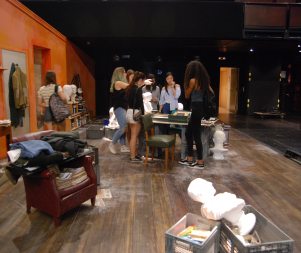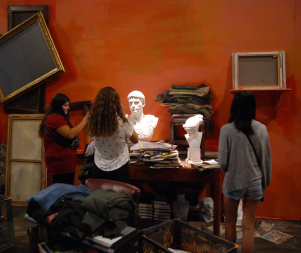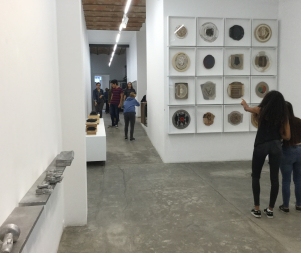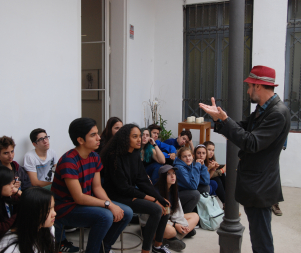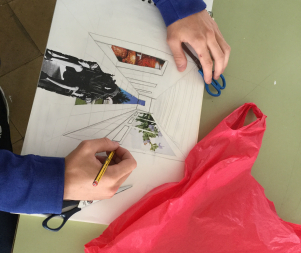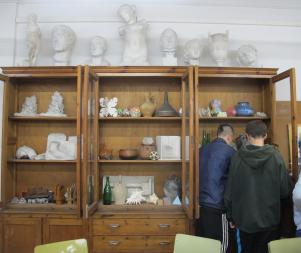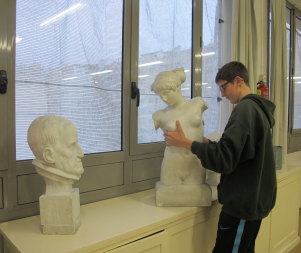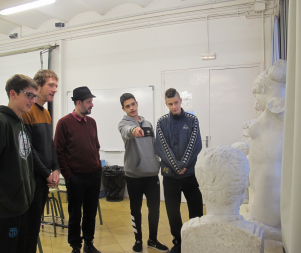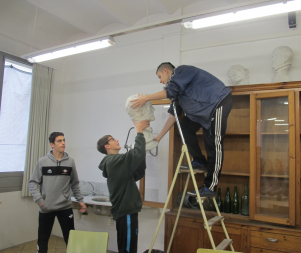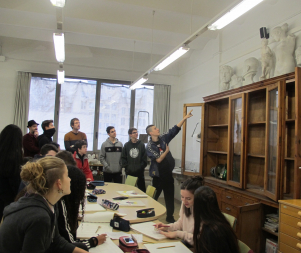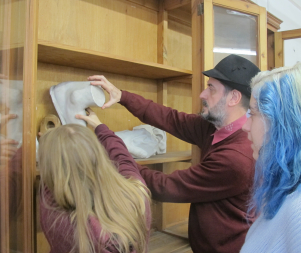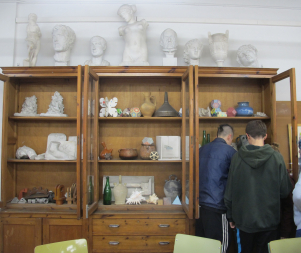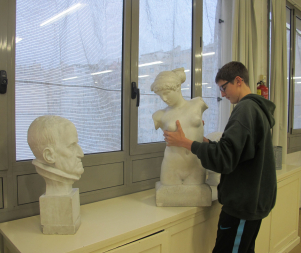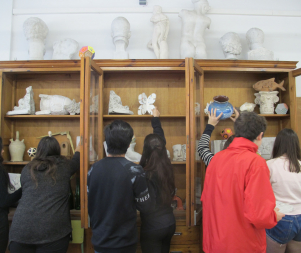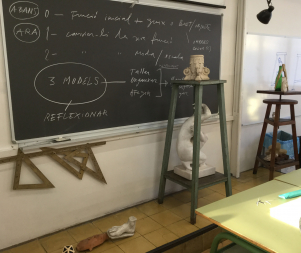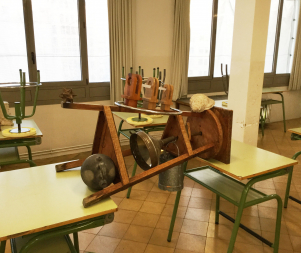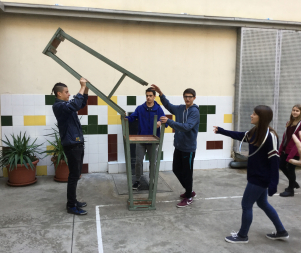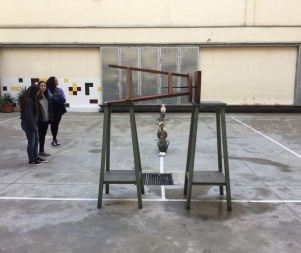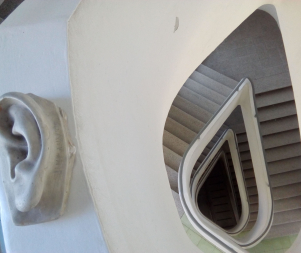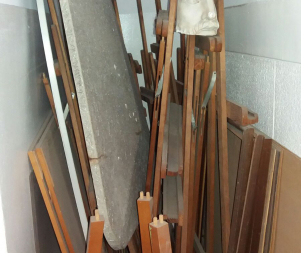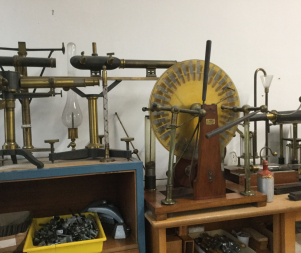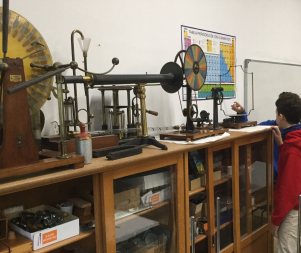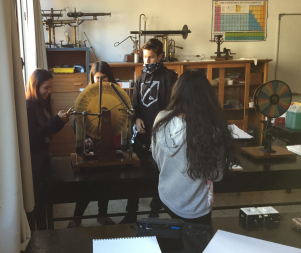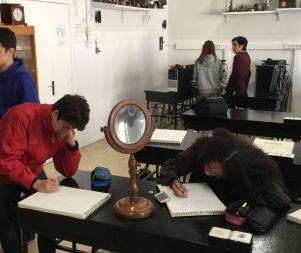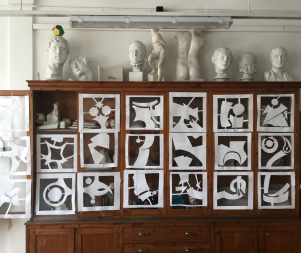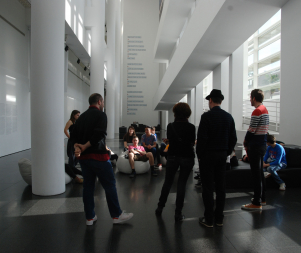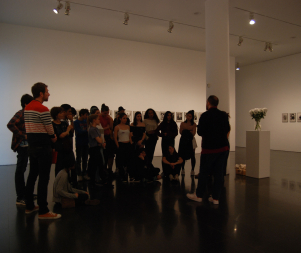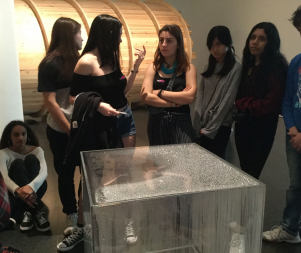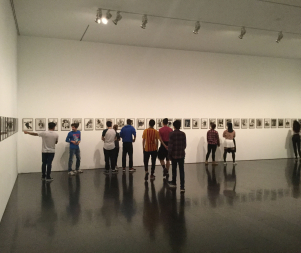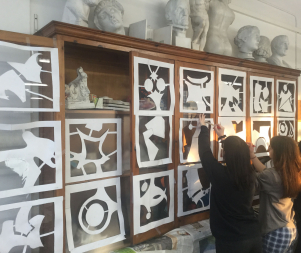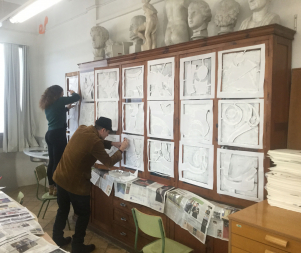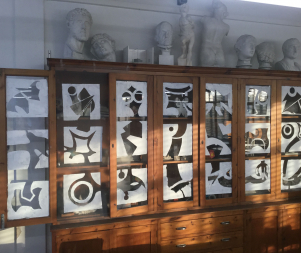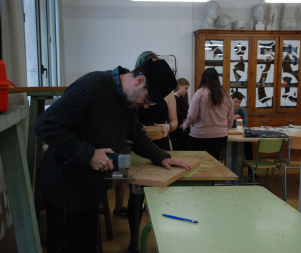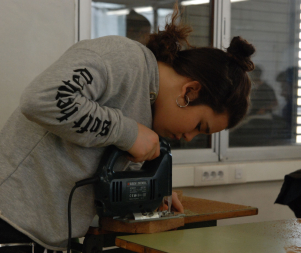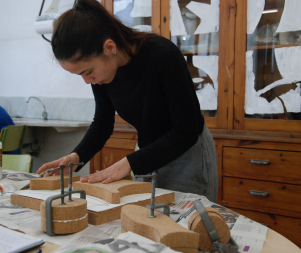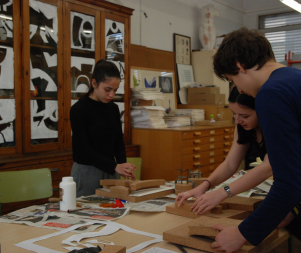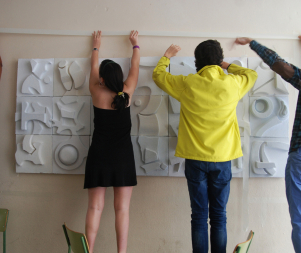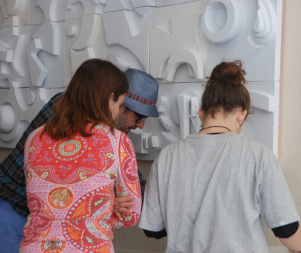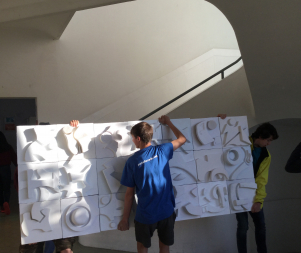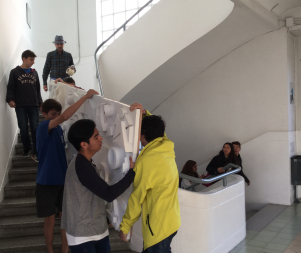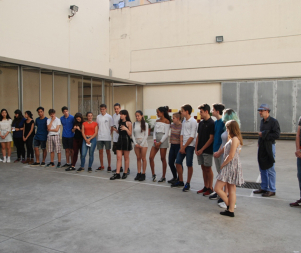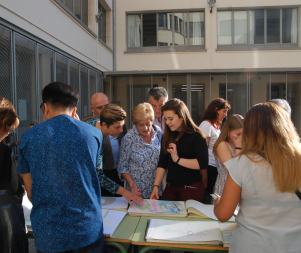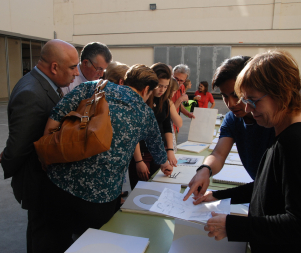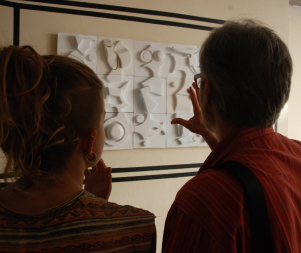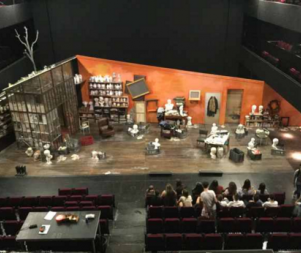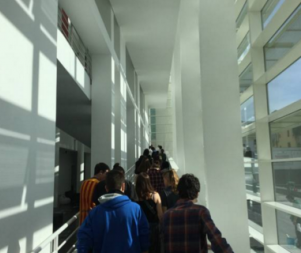- 14th EDITION 2022 / 2023
- 13th EDITION 2021 / 2022
- 12th EDITION 2020 / 2021
- 11th EDITION 2019 / 2020
- 10th EDITION 2018 / 2019
- 9th EDITION 2017 / 2018
- 8th EDITION 2016 / 2017
- 7th EDITION 2015 / 2016
- 6th EDITION 2014 / 2015
- 5th EDITION 2013 / 2014
- 4th EDITION 2012 / 2013
- 3rd EDITION 2011 / 2012
- 2nd EDITION 2010 / 2011
- 1st EDITION 2009 / 2010
Pep Duran IN RESiDENCE at the School Jaume Balmes
Presentation: the dual dimension of Pep Duran’s work
To begin the residency, two outings were organised to enable the pupils to discover Pep Duran’s work at first hand. Firstly, the group visited the Teatre Nacional de Catalunya, where Pep Duran created the set for Lars Laren’s play El coratge de matar. During the visit, the pupils were able to examine the set on stage, as well as entering into an intense conversation with Pep Duran.
Solo exhibition: Amorfa
The pupils and Pep Duran visit the RocíoSantaCruz gallery to see Pep Duran’s solo exhibition Amorfa. This visit gives the group the chance to discover the second dimension in the artist’s work, in this case not linked to theatre set design, and which takes many forms: collages, assemblages, sculpture and so on. The visit ends with a lively discussion between the pupils and the artist.
Study and documentation on the school and its spaces
Institut Jaume Balmes is a hundred-year-old institution housed in a historic building in the rationalist architectural style. This is considered one of the starting points for the project and, over the course of the academic years, the group will research into the history of the school through both the objects it contains and its different spaces.
From the very beginning, this research runs parallel to individual creative work, as all pupils have their own personal notebooks. This is the place for their solo work, thought, notes, tests and sketches, and work that runs transversal to the whole process, illustrating different times, different stages.
Objects in the physics and chemistry laboratories
Discovery, study and inventory of historic objects in the physics and chemistry laboratories. This discovery enables the pupils to come into contact with obsolete and obsolete measuring instruments no longer in use that, nevertheless narrate and open the door to the school’s past, to scientific knowledge. This inventory also comprises formal based on pre-existing objects at the school.
The classroom display case: plaster figures (and other objects)
Another field of formal research and investigation revolves around the display case in the classroom. Plaster figures and other objects are stored there for drawing classes. The group studies the display case both based on its contents and as a container. This study suggests various lines of work, and becomes the starting point for the creation of the final project.
The playground space: study and one-off installation of objects
First engagement with the playground space: one-off installation of objects from the classroom. Design and redesign of spaces through different objects in the space and on people’s routes.
Formal relations: objects and spaces
Photographic work project to establish formal relations between the different elements studied, including both between objects at the school and between spaces and objects. This enables the group to create a more abstract work, important as abstraction is an important concept in the work process. The pupils also study certain key artists that have reinterpreted classical plaster figures (Duchamp, Man Ray, Picasso, Jeff Koons and so on).
The presentation display case
Work on the modular framework of the display case. Search for abstract forms related to the objects contained in the case. The pupils pool their formal proposals, linking them so that each module is connected or relates to the whole. Work using cardboard stencils, applying them on the glass with calcite.
Visit to the MACBA collection
Visit to the MACBA collection, designed in cooperation with the museum education service to tie in with the creative process launched by the pupils and Pep Duran. Particular interest is paid to works on walls (mosaic by Chillida, graphite work by Keith Haring, words by Laurence Weiner, etc.) and to the solutions that each artist creates with regard to the space. These considerations will be key to deciding the final location of the work at the school.
Materials: from plane to volume
With the modules drawn over the display case, work begins on using cork to create volume, and covering the piece with plaster and paint in different tones of white. Finally, the sketches are placed over an okume base ready for installation on the school wall.
Location and final installation
The choice of the site requires the group to observe and think about the different spaces at the school, the movement of people, how to embellish certain spaces… Finally, the group decides to install the mosaic in the corridor that leads to the hall. The study of the movement of people and the desire to highlight the case the group has worked on over the course of the academic year persuades them to create a trompe-l’oeil linked to anamorphism, as seen from a very precise angle of vision. The point is indicated on the floor of the playground.
Presentation
The final presentation takes place in the school playground at 6.30 pm on May 23. Tables are arranged to enable visitors to browse through the personal notebooks. Several pupils, along with the teacher, Jonathan Palacín, and Pep Duran tell the gathering about the work and the entire research process. At the end of this introduction, visitors are invited to go to the drawing room to see the intervened display case that establishes a dialogue with the final work.
The presentation is attended by other pupils and relatives, teachers at the school, and representatives from Barcelona City Council Institute of Culture and Barcelona Education Consortium, as well as other people linked to the world of culture.
Parallel activities
- Visit to the Catalan National Theatre (Teatre Nacional de Catalunya, TNC, 3/10/2016)
The purpose of the visit is to see the set designed by Pep Duran for Lars Noren’s play El coratge de matar. The group also discover material from storage at the theatre, used by many of the set designers that work at the TNC.
http://blocsenresidencia.bcn.cat/jaumebalmes1617/index.php/2016/10/09/tercera-sessio-3-doctubre-2016-visita-al-teatre-nacional-de-catalunya-escenografia-de-lobra-el-coratge-de-matar-lars-noren-creada-per-pep-duran/
- Visit to the solo exhibition Amorfa at the RocioSantaCruz gallery (19/10/2016)
The visit to this solo exhibition enables the pupils to discover the dual dimension of Pep Duran’s work at first-hand. There, they see the artist’s latest creations and note the different languages that he uses in his work: collage, assemblage, sculpture and so on. At the end of the visit, pupils and artist engage in a lively discussion about art and work processes.
- Visit to MACBA (09/03/2017)
A visit to the MACBA collection is organised in cooperation with the museum education in order to link it closely to the creative processes involved in the residency. During the visit, particular interest is interventions in the architectural spaces of the museum, both interior and exterior.
http://blocsenresidencia.bcn.cat/jaumebalmes1617/index.php/2017/03/28/visita-al-macba-colleccio-macba-31/

